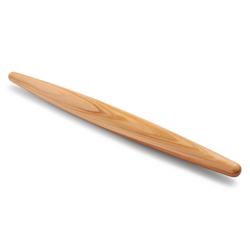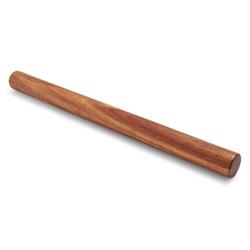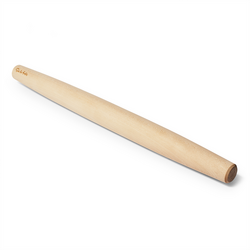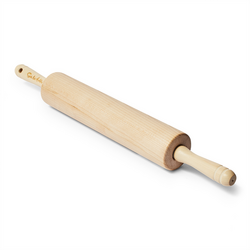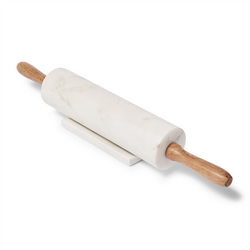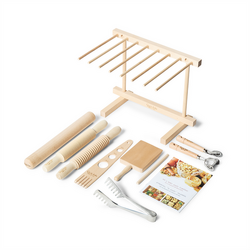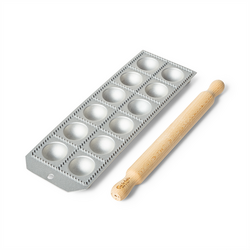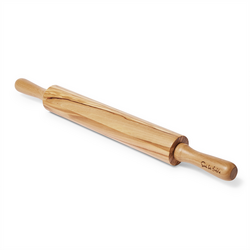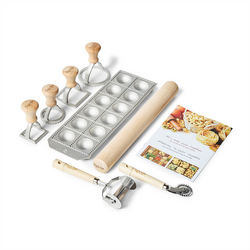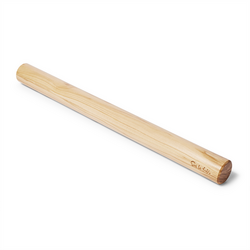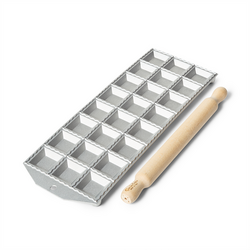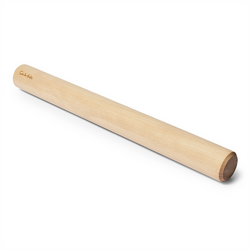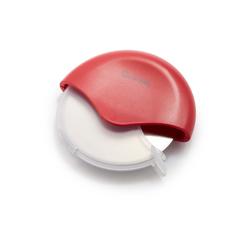-
(10)
Roll out sugar cookies or pasta dough or flatten thick cuts of meat with this rolling pin from Sur La Table. The tapered French-style design easily grips and releases the dough, making it perfect for beginning bakers and professionals alike.
Pros: beautiful wood, easy to use, ergonomic
-
(8)
Roll out pasta or pastry dough or crush candies as a garnish with this rolling pin from Sur La Table. It features handy measurement markings along the pin's base, making it easy to precisely measure dough for your favorite pie crust, sugar cookies or...
Pros: good quality, big, efficiency
-
(48)
Great rolling pin love it!...Love this rolling pin. Makes rolling dough quick and easy with great results.
Pros: effective, beautiful, perfect size
-
(16)
Great Product...Great
Pros: nice, easy to use, lovely
-
(4)
Great value! Plan to pass it to our kids with our favorite cookie recipes when the time comes.
Pros: well made, made in america, water repellent
-
(4)
Made from natural white marble this beautiful rolling pin flattens in fewer passes thanks to its heavyweight design. Thanks to the wooden handles, this pin is comfortable to grip and easy to control as you work. it can also be chilled prior to use for...
Pros: meets expectations, effective for rolling thin dough, satisfaction
-
(1)
Lots of tools to work with and the pasta recipe it came with tastes great.
Pros: variety of tools, good recipe
-
(1)
Roll out doughs for pies, tarts, cookies and more with this rolling pin made from durable olivewood rolling pin. The handles on each side make this rolling pin easy to use while the olivewood design resists odor and stains.
-
Prepare delicious homemade ravioli, perfectly folded tortellini and more stuffed pastas with our convenient set inspired by traditional pasta-making tools. Our set includes a ravioli tablet, rolling pin, two square stamps, two round stamps, a pasta cutter...
Pros: complete kit for making ravioli
-
Roll out doughs for pies, tarts, cookies and more with this rolling pin made from durable olivewood rolling pin. Olivewood resists odors and stains.
-
(11)
Easily create perfectly smooth dough for pies, cookies, pizzas and more with this handy tool. The large roller is perfect for the initial rolling, while the smaller roller makes it easy to smooth uneven spots, push dough to the pan edges and ensure a...
Pros: handy, versatile, space-saving
-
(3)
I love the simplicity of this ravioli tray; however, the caveat for me was that my pasta sheeter did
Pros: good texture, simplicity, convenience
Rolling Pin
A rolling pin is a kitchen tool used to shape dough into thin, even sheets. It is usually cylindrical in shape, with two handles on either end. These handles are used to grip and rotate the rolling pin, allowing the dough to be rolled in a steady and even manner. Here are some great options.
Rolling Pin
FAQ List
Rolling pins can be made of a variety of materials, including wood, silicone, marble, and stainless steel.
For beginners, a wooden rolling pin with handles is a great option. It provides a comfortable grip and is easy to control.
It depends on the material of your rolling pin. Wooden rolling pins should be washed by hand, while silicone and stainless steel rolling pins can typically be put in the dishwasher.
Not necessarily, but a tapered rolling pin can be helpful for rolling out pie crusts evenly and thinly.
When choosing a rolling pin, consider the material, shape, and size that will work best for your needs. Additional features like measurement markings or a non-stick surface can also be helpful.

